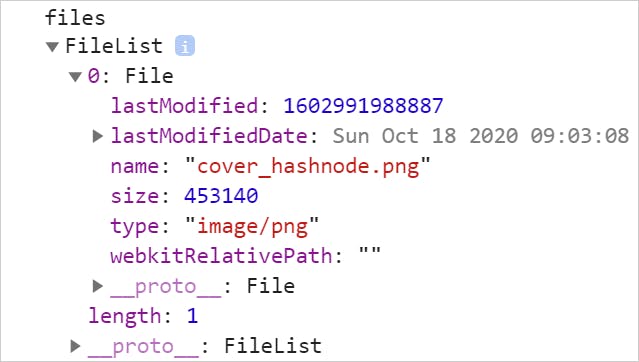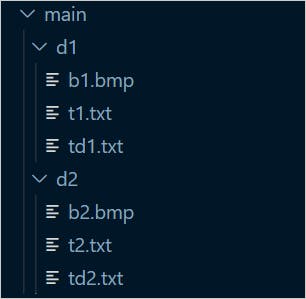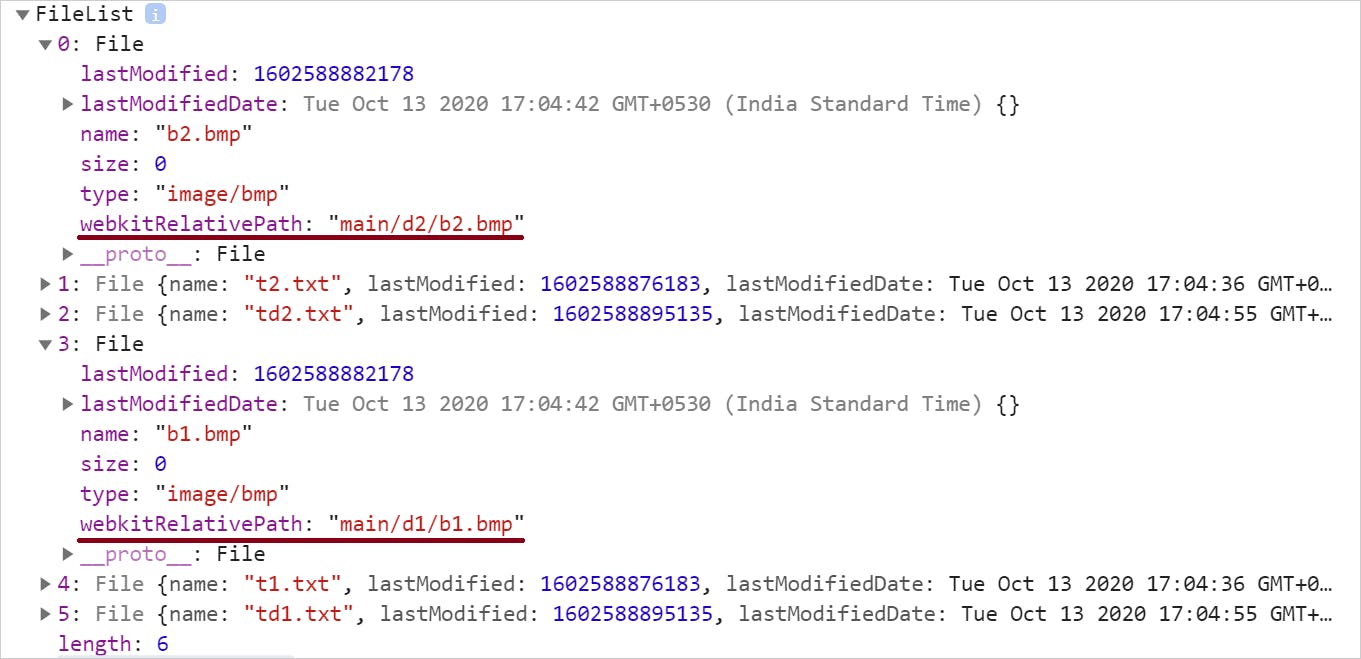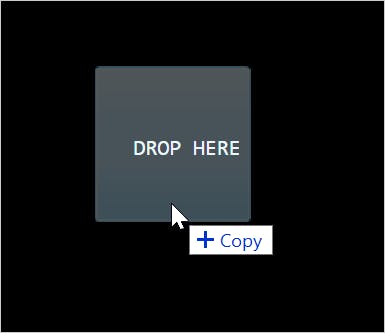How to Build a Web Page That Will Upload a File
Introduction
The ability to upload files is a fundamental requirement for many web and mobile applications. From uploading your photo on social media to post your resume on a task portal website, file upload is everywhere.
Equally a web developer, we must know that HTML provides the support of native file upload with a bit of help from JavaScript. With HTML5 the File API is added to the DOM. Using that, we tin can read the FileList and the File Object within information technology. This solves multiple utilise-cases with files, i.e, load them locally or send over the network to a server for processing, etc.
In this article, we volition discuss ten such usages of HTML file upload back up. Hope you find it useful.
TL;DR
At whatever point in fourth dimension, if you lot want to play with these file upload features, you can find it from here,
- HTML File Upload Demo: https://html-file-upload.netlify.app/
The source lawmaking of the demo is in my Github repo. ✋ Feel gratuitous to follow as I keep the code updated with examples. Please requite a ⭐ if you discover information technology useful.
- Source Code Repo: https://github.com/atapas/html-file-upload
1. Uncomplicated file upload
Nosotros can specify the input type as file to apply the file uploader functionality in a spider web application.
<input type="file" id="file-uploader"> An input file type enables users with a push to upload one or more than files. By default, it allows uploading a single file using the operating arrangement'south native file browser.
On successful upload, the File API makes information technology possible to read the File object using simple JavaScript code. To read the File object, we need to listen to the alter event of the file uploader.
First, get the file uploader case by id,
const fileUploader = document.getElementById('file-uploader'); And so add together a change upshot listener to read the file object when the upload completes. We get the uploaded file data from the event.target.files holding.
fileUploader.addEventListener('change', (upshot) => { const files = event.target.files; console.log('files', files); }); Observe the output in the browser console. Annotation the FileList assortment with the File object having all the metadata information about the uploaded file.

Here is the CodePen for you with the same case to explore further
2. Multiple file uploads
We tin can upload multiple files at a time. To do that, nosotros just need to add an aspect called, multiple to the input file tag.
<input type="file" id="file-uploader" multiple /> Now, the file browser will allow yous to upload one or more files to upload. But like the previous example, you tin add a modify event handler to capture the information about the files uploaded. Have you noticed, the FileList is an assortment? Right, for multiple file uploads the assortment will accept information every bit,

Here is the CodePen link to explore multiple file uploads.
Whenever nosotros upload a file, the File object has the metadata information like file name, size, terminal update time, type, etc. This information can exist useful for further validations, decision-making.
// Get the file uploader by id const fileUploader = document.getElementById('file-uploader'); // Listen to the change event and read metadata fileUploader.addEventListener('alter', (event) => { // Get the FileList assortment const files = event.target.files; // Loop through the files and get metadata for (const file of files) { const name = file.name; const type = file.blazon ? file.type: 'NA'; const size = file.size; const lastModified = file.lastModified; console.log({ file, name, type, size, lastModified }); } }); Here is the output for single file upload,

Utilize this CodePen to explore further,
4. Know about file take belongings
We can use the accept attribute to limit the type of files to upload. You may desire to show just the immune types of images to browse from when a user is uploading a profile picture.
<input type="file" id="file-uploader" accept=".jpg, .png" multiple> In the code in a higher place, the file browser will allow only the files with the extension jpg and png.
Note, in this instance, the file browser automatically sets the file option type every bit custom instead of all. Yet, y'all can e'er change it back to all files, if required.

Apply this CodePen to explore the accept attribute,
v. Manage file content
You may want to show the file content subsequently a successful upload of information technology. For contour pictures, it will be confusing if we do not testify the uploaded picture to the user immediately after upload.
We tin can employ the FileReader object to convert the file to a binary cord. Then add a load result listener to get the binary string on successful file upload.
// Get the case of the FileReader const reader = new FileReader(); fileUploader.addEventListener('alter', (event) => { const files = effect.target.files; const file = files[0]; // Get the file object later on upload and read the // data as URL binary string reader.readAsDataURL(file); // Once loaded, exercise something with the string reader.addEventListener('load', (event) => { // Here nosotros are creating an image tag and calculation // an image to it. const img = certificate.createElement('img'); imageGrid.appendChild(img); img.src = consequence.target.result; img.alt = file.name; }); }); Try selecting an paradigm file in the CodePen below and encounter information technology renders.
6. Validate file size
As we take seen, we tin can read the size metadata of a file, nosotros can actually use it for a file size validation. You may allow users to upload an image file upwards to 1MB. Permit united states run across how to achieve that.
// Listener for file upload change consequence fileUploader.addEventListener('modify', (event) => { // Read the file size const file = event.target.files[0]; const size = file.size; permit msg = ''; // Check if the file size is bigger than 1MB and set a message. if (size > 1024 * 1024) { msg = `<span fashion="color:ruby-red;">The allowed file size is 1MB. The file you lot are trying to upload is of ${returnFileSize(size)}</bridge>`; } else { msg = `<bridge style="color:green;"> A ${returnFileSize(size)} file has been uploaded successfully. </bridge>`; } // Prove the bulletin to the user feedback.innerHTML = msg; }); Endeavour uploading a file of different sizes to see how the validation works,
7. Show file upload progress
The better usability is to let your users know near a file upload progress. We are now aware of the FileReader and the consequence to read and load the file.
const reader = new FileReader(); The FileReader has another event called, progress to know how much has been loaded. We tin can utilise HTML5's progress tag to create a progress bar with this data.
reader.addEventListener('progress', (event) => { if (event.loaded && result.total) { // Summate the percentage completed const percent = (event.loaded / result.total) * 100; // Prepare the value to the progress component progress.value = percent; } }); How most yous endeavor uploading a bigger file and see the progress bar working in the CodePen below? Give it a try.
viii. How about directory upload?
Can we upload an unabridged directory? Well, it is possible only with some limitations. There is a not-standard aspect(at least, while writing this article) called, webkitdirectory that allows us to upload an entire directory.
Though originally implemented only for WebKit-based browsers, webkitdirectory is too usable in Microsoft Edge as well equally Firefox 50 and later. All the same, fifty-fifty though information technology has relatively broad support, it is still non standard and should not be used unless you have no alternative.
You tin specify this attribute as,
<input type="file" id="file-uploader" webkitdirectory /> This will let you to select a binder(aka, directory),

User has to provide a confirmation to upload a directory,

Once the user clicks the Upload push, the uploading takes place. One important bespeak to note hither. The FileList array will have information about all the files in the uploaded directory equally a apartment structure. But the central is, for each of the File objects, the webkitRelativePath attribute volition have the directory path.
For instance, permit u.s. consider a main directory and other folders and files nether it,

At present the File objects will accept the webkitRelativePath populated equally,

You can use it to render the folder and files in any UI structure of your pick. Use this CodePen to explore further.
9. Allow'southward drag, drop and upload
Not supporting a drag-and-drib for file upload is kinda old fashion, isn't it? Allow us see how to attain that with a few unproblematic steps.
Start, create a drop zone and optionally a section to show the uploaded file content. We will use an image as a file to drag and drop hither.
<div id="container"> <h1>Drag & Drop an Image</h1> <div id="drop-zone"> DROP Here </div> <div id="content"> Your paradigm to announced here.. </div> </div> Get the dropzone and the content areas by their respective ids.
const dropZone = certificate.getElementById('drop-zone'); const content = document.getElementById('content'); Add a dragover event handler to show the upshot of something going to exist copied,
dropZone.addEventListener('dragover', outcome => { event.stopPropagation(); effect.preventDefault(); upshot.dataTransfer.dropEffect = 're-create'; }); 
Next, ascertain what nosotros want to do when the image is dropped. We will need a drib issue listener to handle that.
dropZone.addEventListener('driblet', event => { // Get the files const files = event.dataTransfer.files; // Now we tin can exercise everything possible to show the // file content in an HTML element like, DIV }); Attempt to drag and drop an image file in the CodePen example below and meet how it works. Do not forget to see the lawmaking to render the dropped image too.
x. Handle files with objectURLs
There is a special method called, URL.createObjectURL() to create an unique URL from the file. You can also release it by using URL.revokeObjectURL() method.
The DOM
URL.createObjectURL()andURL.revokeObjectURL()methods allow you create simple URL strings that can exist used to reference any data that can be referred to using a DOM File object, including local files on the user's calculator.
A simple usage of the object URL is,
img.src = URL.createObjectURL(file); Employ this CodePen to explore the object URL further. Hint: Compare this approach with the approach mentioned in #five previously.
Conclusion
I truly believe this,
Many times a native HTML feature may be enough for us to bargain with the utilize-cases in hands. I constitute, file upload is one such that provides many absurd options by default.
Let me know if this article was useful to you by commenting beneath. You lot may also like,
- 10 useful HTML5 features, you may not be using
- I made a photo gallery with CSS blitheness. Hither's what I learned.
- 10 lesser-known Web APIs you may want to apply
If it was useful to yous, delight Like/Share so that, it reaches others also. Please hit the Subscribe button at the summit of the page to get an email notification on my latest posts.
You tin @ me on Twitter (@tapasadhikary) with comments, or feel gratuitous to follow me.
Source: https://blog.greenroots.info/10-useful-html-file-upload-tips-for-web-developers
0 Response to "How to Build a Web Page That Will Upload a File"
ارسال یک نظر